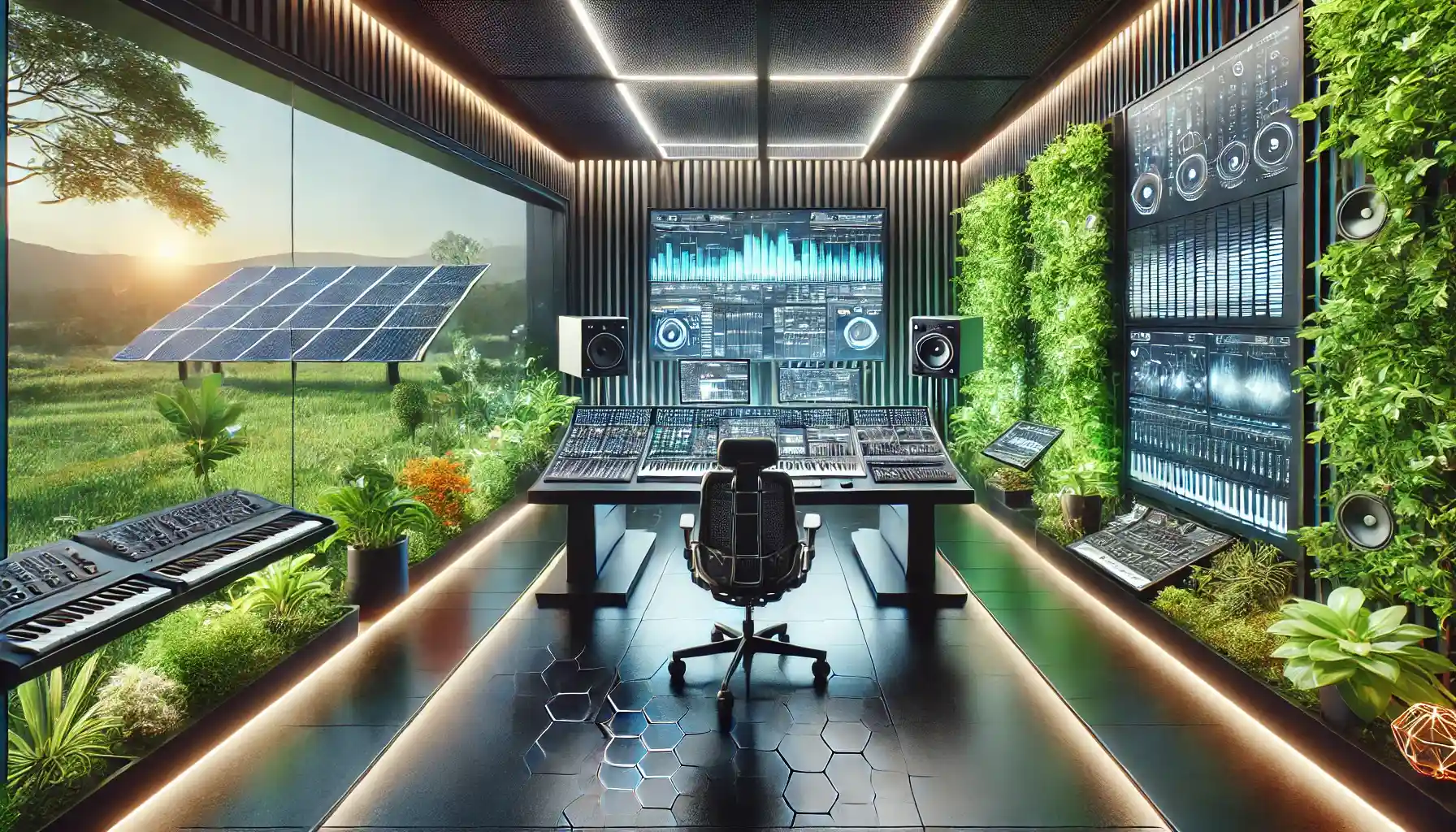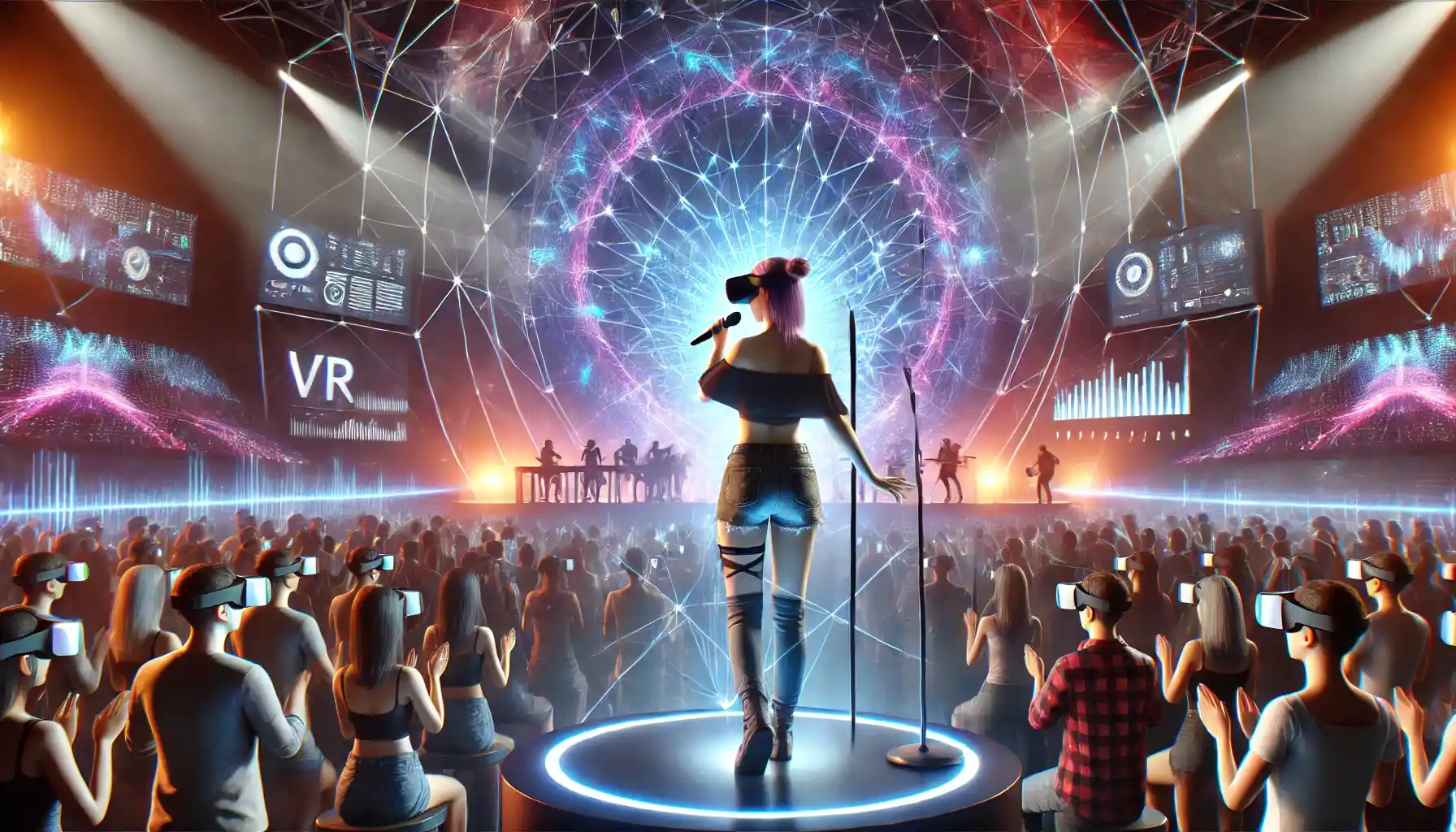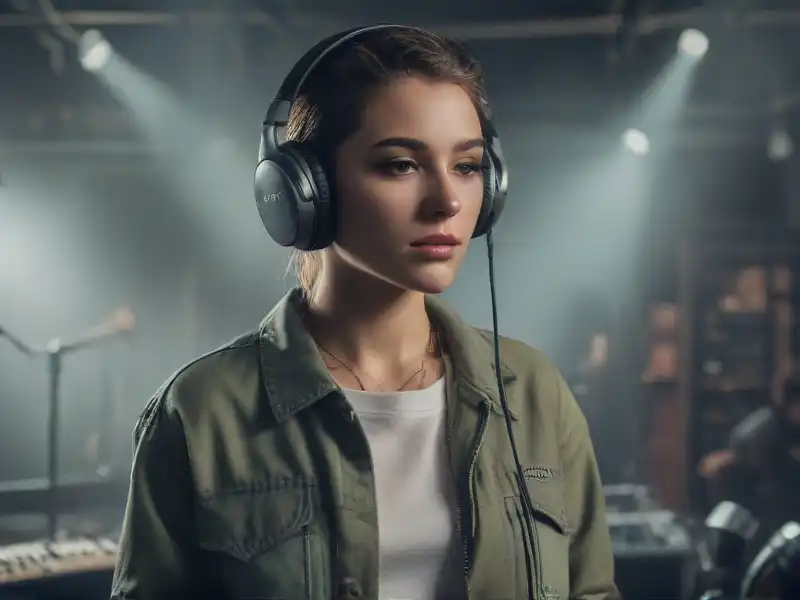Introduction to Modern Musical Landscapes: Unveiling the Harmony Highlights of 2024
As we delve into the heart of 2024, the music industry continues to ride the waves of transformative change, heralding an era where technological marvels intersect with creative mastery. The ever-evolving sonic landscapes present "Harmony Highlights: Latest Trends and Breakthroughs in Music," a deep dive into how these innovations and movements are reshaping what we listen to and how we experience music. This exploration will not only shed light on the dynamic shifts within the industry but also forecast the potential trajectories that music might take in the near future.
The Dawn of Musical Convergence and Technological Symphony
Genre Crossovers and Hybrid Sounds
In 2024, musical genres are no longer rigid territories guarded by traditionalists but rather fluid spaces of artistic experimentation. The trend of genre crossovers has given rise to hybrid sounds that blur the lines between distinct musical styles, creating rich, innovative soundscapes. This year, jazz-infused hip-hop and classical-electronic fusions are at the forefront, captivating audiences with their intricate harmonies and groundbreaking compositions. These blends not only challenge the norm but also cater to a diverse listener base, each seeking novelty and complexity in their auditory experiences.
Artists like Esperanza Spalding have taken jazz to new heights by infusing it with hip-hop rhythms, while composers such as Max Richter are pioneering the integration of classical textures with electronic beats. This cross-pollination of sounds is driven by a desire to explore uncharted musical territories, encouraging artists to step out of their comfort zones and audiences to expand their musical palates.

AI-Generated Music: The New Frontier
Artificial intelligence in music, once a novel experiment, has burgeoned into a full-fledged industry trend in 2024. AI-generated music is not just a gimmick but a substantial development that complements human creativity, offering tools that enhance songwriting, production, and performance. Innovative software now allows for compositions that challenge the very notion of authorship in music, with AI programs like OpenAI's Jukebox and Google's Magenta pushing the boundaries of automated creativity.
For instance, AI is being used to complete unfinished symphonies, create new pieces in the styles of past composers, and even generate adaptive soundtracks for games and virtual reality experiences. These capabilities democratize music production, enabling both seasoned musicians and novices to produce studio-quality music without extensive resources.
Immersive Music Experiences: Engaging the Senses
The rise of virtual and augmented reality technologies has transformed the concert scene, offering immersive music experiences that engage more than just the auditory senses. In 2024, these technologies are increasingly integrated into live performances and music videos, crafting experiences that are as visually and tactically engaging as they are audibly. Artists are using VR to transport their audiences to fantastical landscapes or augmented reality to add a new layer of interactivity at concerts.
Imagine attending a virtual concert by Billie Eilish where the stage and environment change dynamically with each song, or experiencing a classical concert where you can "walk" among the musicians, exploring each instrument's sound up close. These experiences deepen the connection between artists and audiences, making each performance a unique journey rather than just a listening session.
Looking Forward
As we continue to explore the harmony highlights of 2024, it becomes clear that the music industry is in a state of perpetual innovation. The blending of genres, the integration of AI, and the enhancement of immersive experiences are just the beginning. These trends not only redefine the boundaries of what music can be but also promise a future where the possibilities are as limitless as the creativity of those who dare to explore them.
The Green Beat: Sustainability in Music Production
The music industry's impact on the environment has not gone unnoticed, and 2024 marks a significant shift towards more sustainable practices in music production and distribution. Artists and producers are now actively seeking ways to reduce their carbon footprints and incorporate eco-friendly practices into their work. This includes everything from utilizing sustainable materials for physical media, such as biodegradable vinyl and eco-friendly packaging, to reducing emissions during tours by opting for electric tour buses and local, seasonal food for crew and fans.
Moreover, the push towards digital media continues to grow, significantly reducing the need for physical production and distribution. High-resolution digital formats are becoming the norm, preserving sound quality without the environmental cost of traditional physical mediums. Record labels like Ninja Tune and others are leading the way by implementing robust sustainability policies that aim to not only minimize environmental impact but also set a new standard for the industry at large.
The Rise of Independent Artists
2024 is also witnessing a remarkable rise in the influence of independent artists in the music scene. Freed from the constraints of major record labels, these artists are cultivating their careers on their own terms, utilizing digital platforms to reach global audiences directly. This trend is not just about artistic freedom; it's also about economic empowerment, as artists retain more control over their revenues and intellectual property.
Digital platforms such as Bandcamp, SoundCloud, and Spotify’s direct upload feature provide tools that help independent artists market, distribute, and monetize their music without intermediary influence. This democratization of music production and distribution has led to a proliferation of diverse musical voices and has fostered a more vibrant, inclusive musical landscape.
Nostalgia and Retro Influences: The Comfort of the Past
Amidst the forward-looking trends, there's a parallel resurgence of nostalgia in the music industry, with artists and listeners alike gravitating towards the familiar comfort of retro sounds. From the synth-heavy echoes of the '80s to the raw, grunge vibes of the '90s, these styles are making a comeback, often reinterpreted with a modern twist.
This trend is more than just a revival; it's a celebration of musical heritage, offering a sentimental bridge between past and present. Artists like Dua Lipa and The Weeknd have successfully incorporated retro elements into their music, achieving commercial success and critical acclaim. This resurgence not only appeals to those who lived through these eras but also introduces younger generations to the rich sonic textures of the past, creating a multigenerational musical conversation that enriches the cultural fabric of today's music scene.
Looking Ahead
As we explore these significant trends, it becomes evident that the music industry's landscape in 2024 is one of profound transformation and heartfelt homage. The commitment to environmental sustainability, the empowerment of independent artists, and the embrace of nostalgic influences all signify a complex, evolving industry that respects both its roots and its responsibilities to the future.
The Green Beat: Sustainability in Music Production
The music industry's impact on the environment has not gone unnoticed, and 2024 marks a significant shift towards more sustainable practices in music production and distribution. Artists and producers are now actively seeking ways to reduce their carbon footprints and incorporate eco-friendly practices into their work. This includes everything from utilizing sustainable materials for physical media, such as biodegradable vinyl and eco-friendly packaging, to reducing emissions during tours by opting for electric tour buses and local, seasonal food for crew and fans.
Moreover, the push towards digital media continues to grow, significantly reducing the need for physical production and distribution. High-resolution digital formats are becoming the norm, preserving sound quality without the environmental cost of traditional physical mediums. Record labels like Ninja Tune and others are leading the way by implementing robust sustainability policies that aim to not only minimize environmental impact but also set a new standard for the industry at large.
The Rise of Independent Artists
2024 is also witnessing a remarkable rise in the influence of independent artists in the music scene. Freed from the constraints of major record labels, these artists are cultivating their careers on their own terms, utilizing digital platforms to reach global audiences directly. This trend is not just about artistic freedom; it's also about economic empowerment, as artists retain more control over their revenues and intellectual property.
Digital platforms such as Bandcamp, SoundCloud, and Spotify’s direct upload feature provide tools that help independent artists market, distribute, and monetize their music without intermediary influence. This democratization of music production and distribution has led to a proliferation of diverse musical voices and has fostered a more vibrant, inclusive musical landscape.
Nostalgia and Retro Influences: The Comfort of the Past
Amidst the forward-looking trends, there's a parallel resurgence of nostalgia in the music industry, with artists and listeners alike gravitating towards the familiar comfort of retro sounds. From the synth-heavy echoes of the '80s to the raw, grunge vibes of the '90s, these styles are making a comeback, often reinterpreted with a modern twist.
This trend is more than just a revival; it's a celebration of musical heritage, offering a sentimental bridge between past and present. Artists like Dua Lipa and The Weeknd have successfully incorporated retro elements into their music, achieving commercial success and critical acclaim. This resurgence not only appeals to those who lived through these eras but also introduces younger generations to the rich sonic textures of the past, creating a multigenerational musical conversation that enriches the cultural fabric of today's music scene.
Looking Ahead
As we explore these significant trends, it becomes evident that the music industry's landscape in 2024 is one of profound transformation and heartfelt homage. The commitment to environmental sustainability, the empowerment of independent artists, and the embrace of nostalgic influences all signify a complex, evolving industry that respects both its roots and its responsibilities to the future.
Global Music Fusion: A Melodic Mélange
In 2024, the music industry continues to break geographical barriers, ushering in an era of global music fusion that celebrates and integrates diverse musical traditions from around the world. This trend has not only enriched the global music scene with new sounds and styles but has also fostered a deeper appreciation for cultural diversity through music.
Artists from various backgrounds are collaborating more than ever, blending elements from Latin, African, Asian, and Western music to create unique, cross-cultural experiences. These collaborations often result in vibrant, innovative tracks that resonate with a global audience, offering a sonic passport to explore different cultures and histories. The popularity of artists like BTS, Rosalía, and Burna Boy, who infuse their music with regional influences while achieving international acclaim, underscores the power and appeal of this global musical synthesis.
Emerging Genres: The Frontiers of Music Evolution
As we venture further into the musical landscape of 2024, we encounter a proliferation of emerging genres that challenge conventional classifications and reflect the eclectic tastes of modern listeners. Hyperpop, electroclash, and a revival of eurodance and house music are leading the charge, offering energetic, boundary-pushing sounds that captivate both the dance floor and the digital streaming space.
These genres, characterized by their avant-garde approach and often experimental soundscapes, represent the cutting edge of music evolution. They not only cater to niche audiences but also increasingly influence mainstream music, signaling a shift towards more adventurous and diverse musical expressions.
Personalization in Music Consumption: Tailored Musical Experiences
The digital age has revolutionized how listeners engage with music, with personalization at the forefront of this transformation. Streaming platforms like Spotify and Apple Music use sophisticated algorithms to curate playlists that cater to individual tastes, creating a highly personalized listening experience. This trend extends beyond mere convenience, influencing how artists produce and market their music to meet the varied preferences of their audience.
The ability to discover new music that feels personally curated has enhanced listener engagement and loyalty, making music consumption a more intimate and satisfying experience. This shift has significant implications for the industry, from the way music is produced to how it is promoted, with an increasing focus on catering to the personalized demands of the listener.
Technological Integration: Shaping the Sounds of Tomorrow
Finally, the ongoing integration of technology in music creation continues to shape the sounds of tomorrow. Innovations in software synthesizers, alternative tunings, and digital interfaces are enabling artists to craft sounds that were once unimaginable. This technological empowerment is not only expanding the creative possibilities for artists but also changing the very fabric of music itself.
From virtual reality concerts to AI-assisted compositions, technology is at the heart of many of the most exciting developments in the music industry today. As these technologies become more accessible and refined, they promise to further democratize music creation and redefine the boundaries of musical expression.

Conclusion: The Symphony of Progress
The musical trends of 2024 represent a symphony of progress—where tradition meets innovation, and personal expression finds global resonance. From the resurgence of nostalgic genres to the embrace of AI and VR in music production and consumption, each trend contributes to a richer, more diverse global music culture.
As we reflect on these developments, it becomes clear that the future of music is not only about new sounds but also about new ways of experiencing and connecting through music. The ongoing evolution of the music industry promises to keep us all tuned in for years to come, eagerly anticipating the next wave of musical innovation.
Popular
Musical News Flash: Interviews with Industry Insiders and Artists
The music industry is always evolving, with new trends and artists constantly emerging. To stay up-to-date with the latest happenings in the music world, it's essential to hear from industry insiders ...
Read more »How to Surprise a Music Fan: Unusual Gifts and Ideas for Those Who Live by Music
Surprise a music fan with unique gifts that go beyond the ordinary. Explore rare records, vintage concert posters, music-themed coins, and musical instruments that hold history and meaning. Find the p...
Read more »Rhythm Roundup: This Week in Music News
Explore the latest music news with our weekly roundup, featuring new releases from YoungBoy, Snoop Dogg, and DMX, plus upcoming concerts and chart updates. Dive into the evolving trends and technolog...
Read more »


